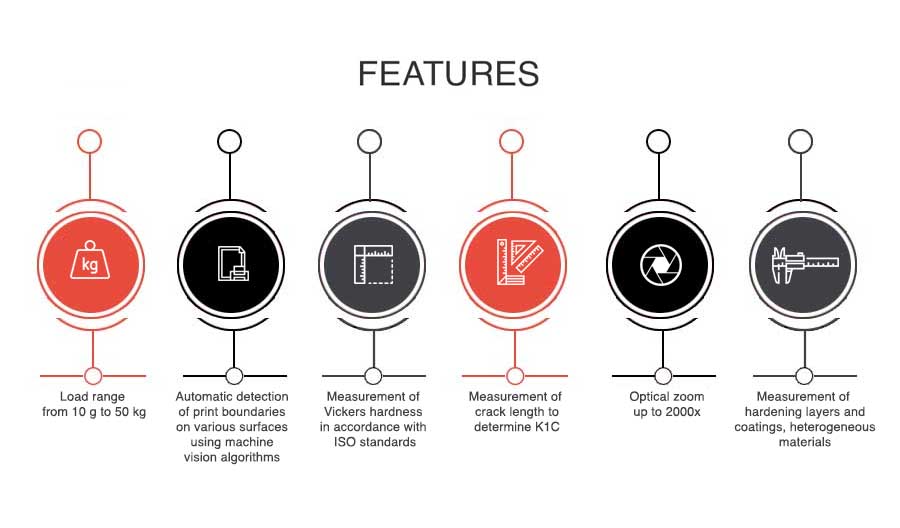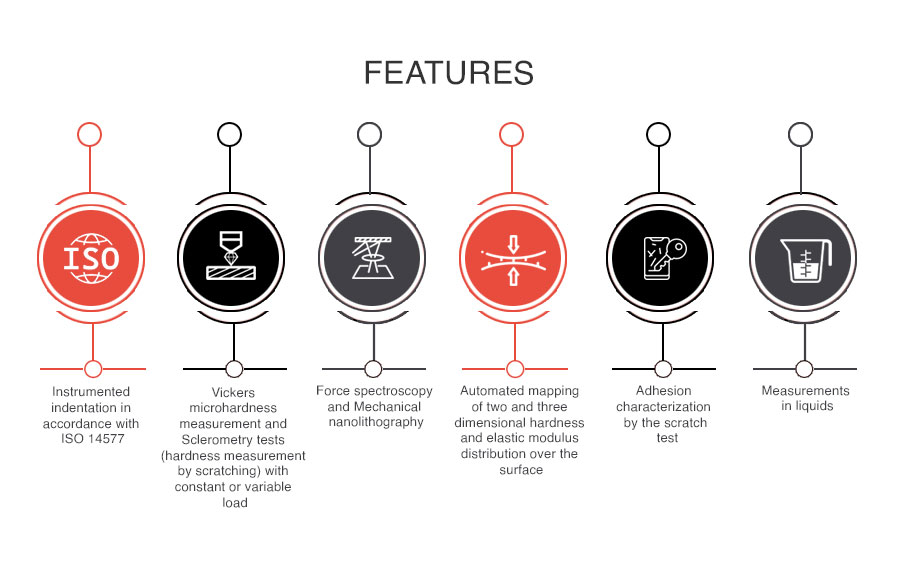Nanoindentation System
Nanoindentation is a type of mechanical indentation testing that is performed on small areas. Nanoindentation is a method for measuring the hardness, plasticity, and elasticity index of minute quantities of materials. It can be used to test raw materials, composite interactions, nanomaterials, thin films, and surface coatings.
Nanoindentation is an effective approach in which a defined indenter tip is forced into a specific spot in the test sample, increasing force is applied, and gradual unloading is conducted until the required depth is achieved. Before unloading, the resting section is provided, which enables the material to relax.



